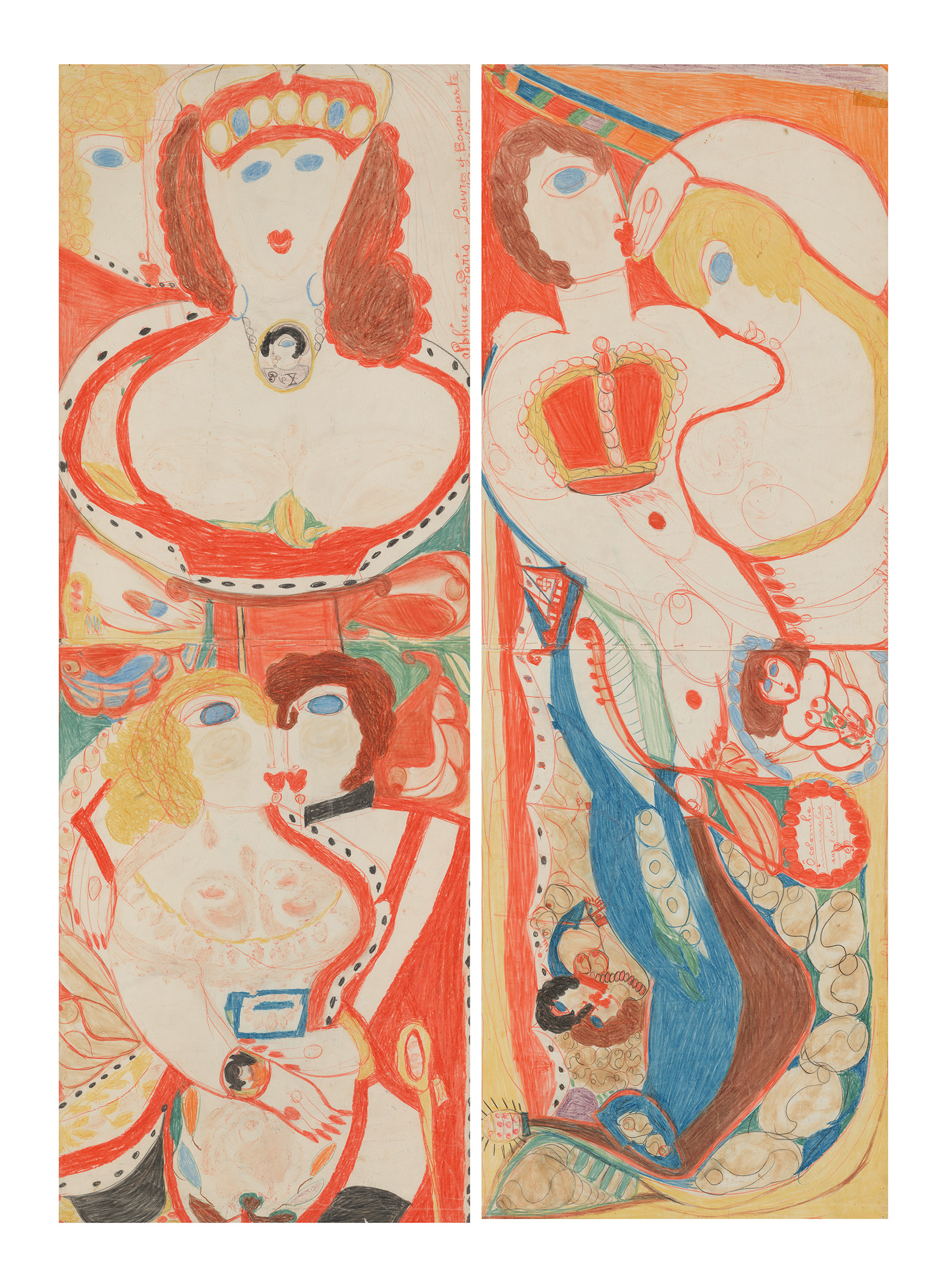Aloïse Corbaz
Switzerland, 1886 — 1964
Aloïse Corbaz’s artistic practice is inseparably linked to her disease – schizophrenia – and to her internment in a psychiatric ward for forty-six years. The drawings that she started making, probably from around 1920, enabled her to overcome illness and internment. At first she drew in hiding, using materials she found in trashcans: fragments of gridded paper, old illustrated postcards, brown paper, old invoices, and bits of cardboard packaging. A stroke of pencil would transform a shape or a detail from the illustrated page into a character. These materi- als were flattened, smoothed out, and patched together using white cotton and red thread; the stitching, which was sometimes very elaborate, emphasises and determines many of the design elements. The very structure of the paper itself seems to dictate motifs: one piece of packaging, from a butcher’s shop, led her to represent the figure of Hitler. The sheets of paper sewn together enabled her to create very large drawings, which Corbaz kept in rolls. Aloïse Corbaz would work on both sides with pencil and crayons, taking up all available space. The world she created is populated by human figures, animals, flowers, and fruit in theatrical stagings that, for her, took on very specific meanings: some of her subjects mimic gestures and poses inspired by illustrated magazines, or adopt the attributes and postures taken from the actors of ritualised theatre or opera; the attitudes are hieratic, the faces inexpressive and immobile, or, conversely, contorted like the masks of classical tragedy. Theatre, opera, and amorous couples adorn this cosmogony, which developed powerful erotic forms.”
